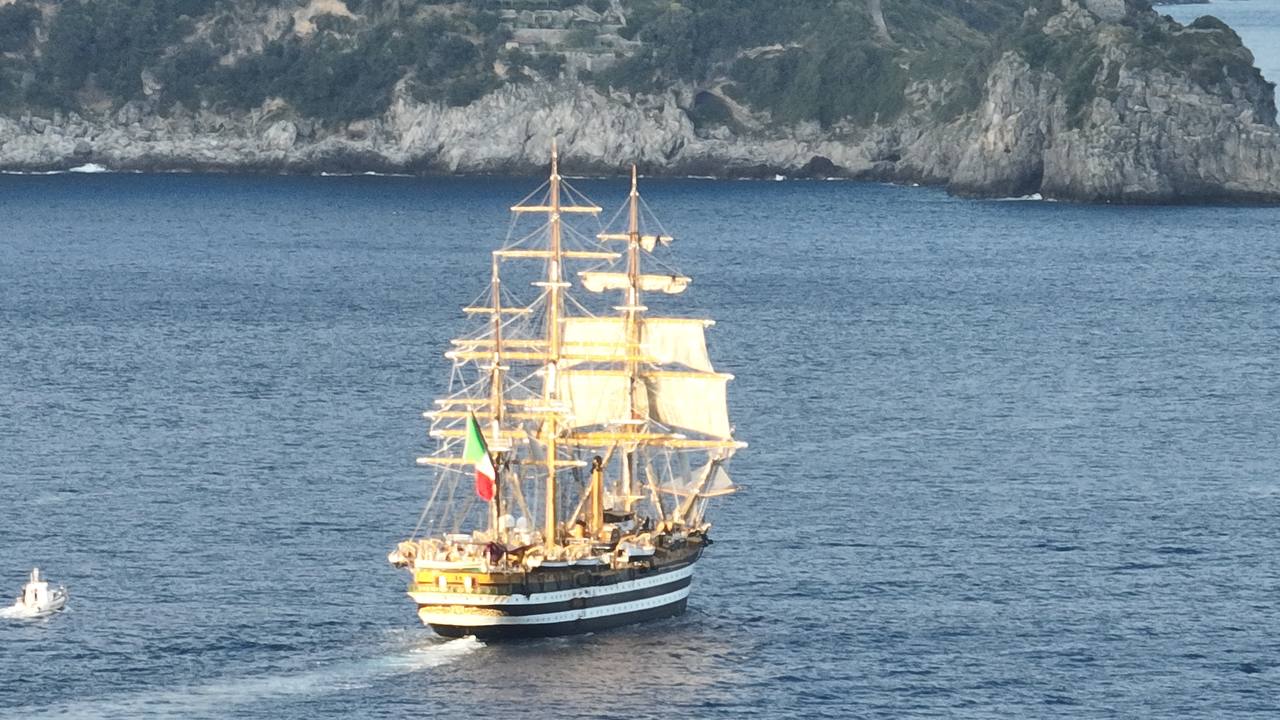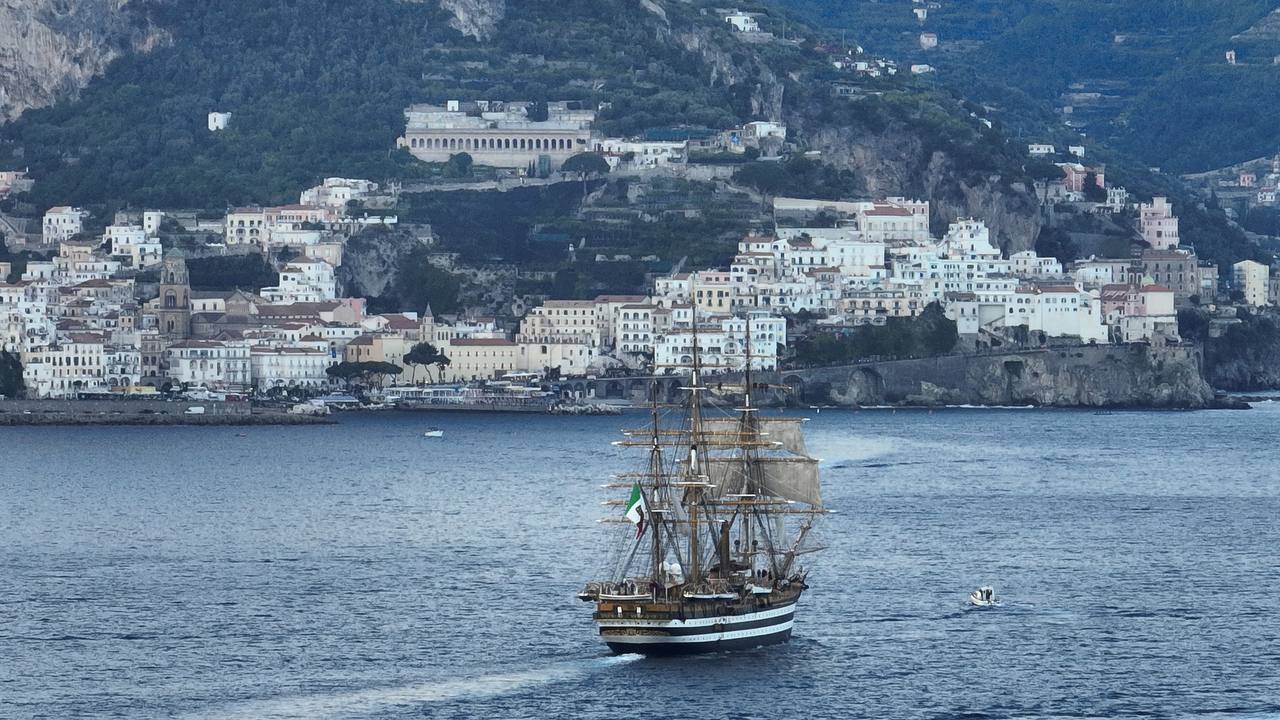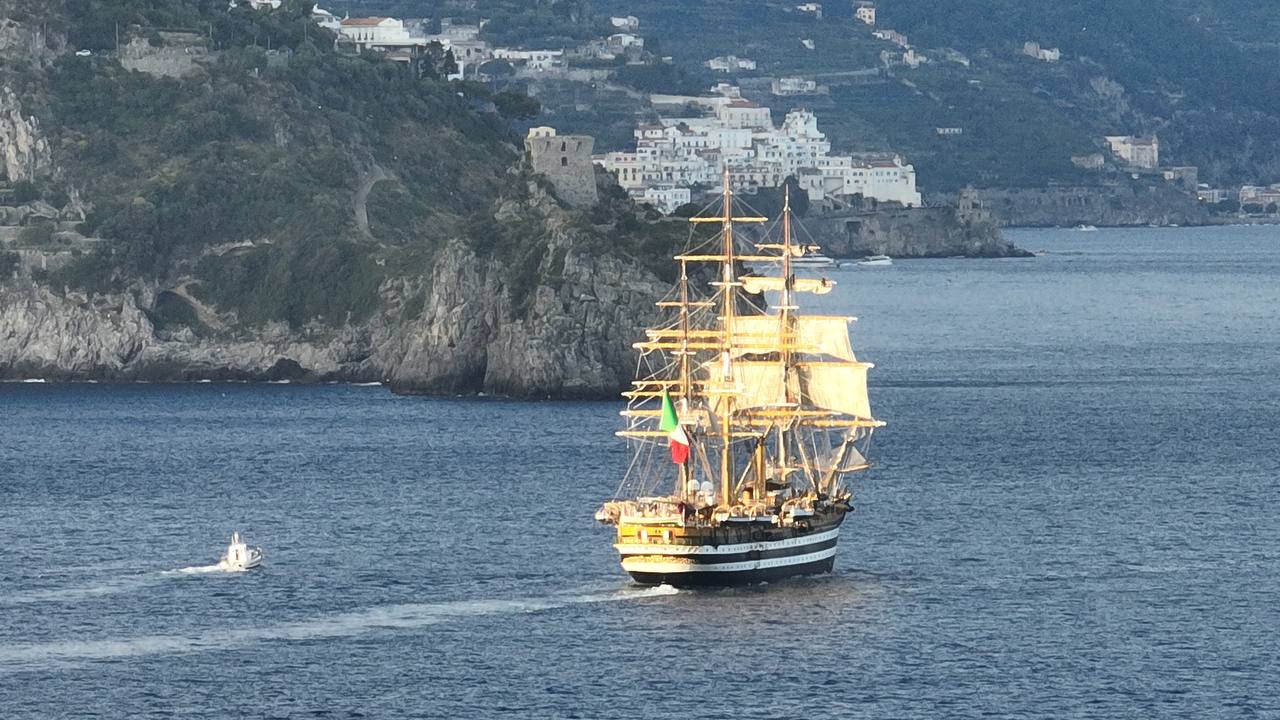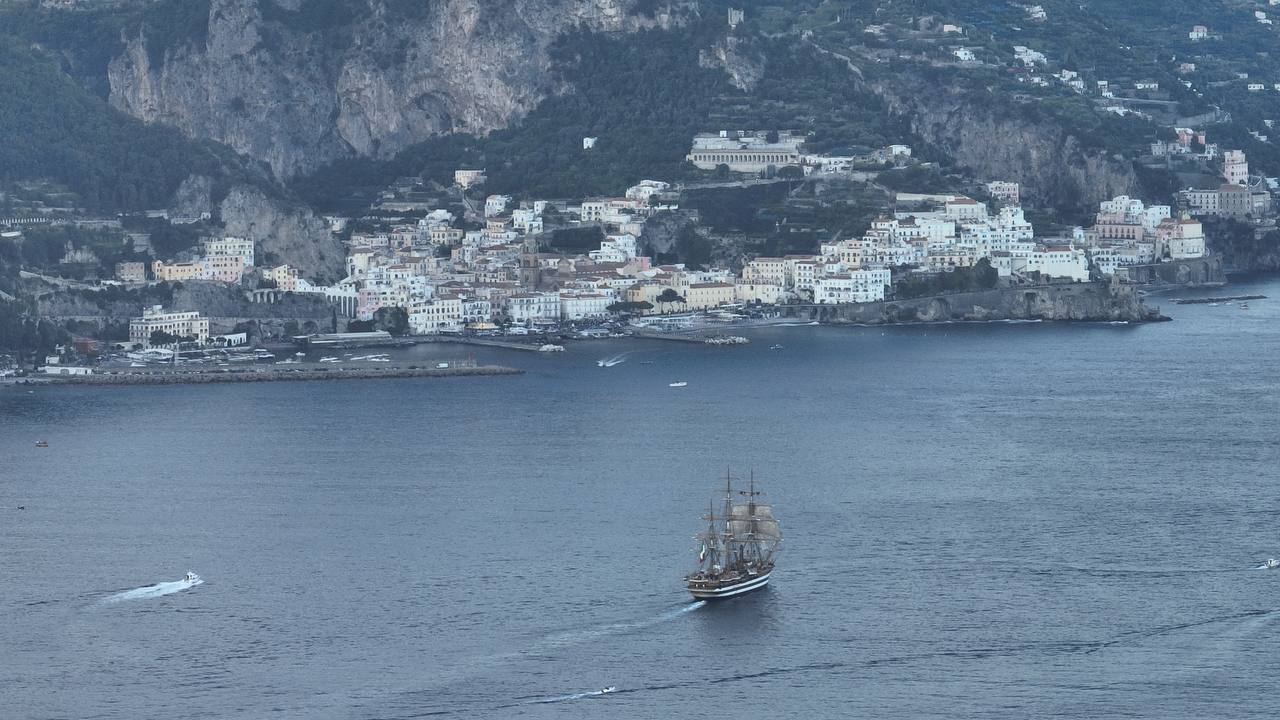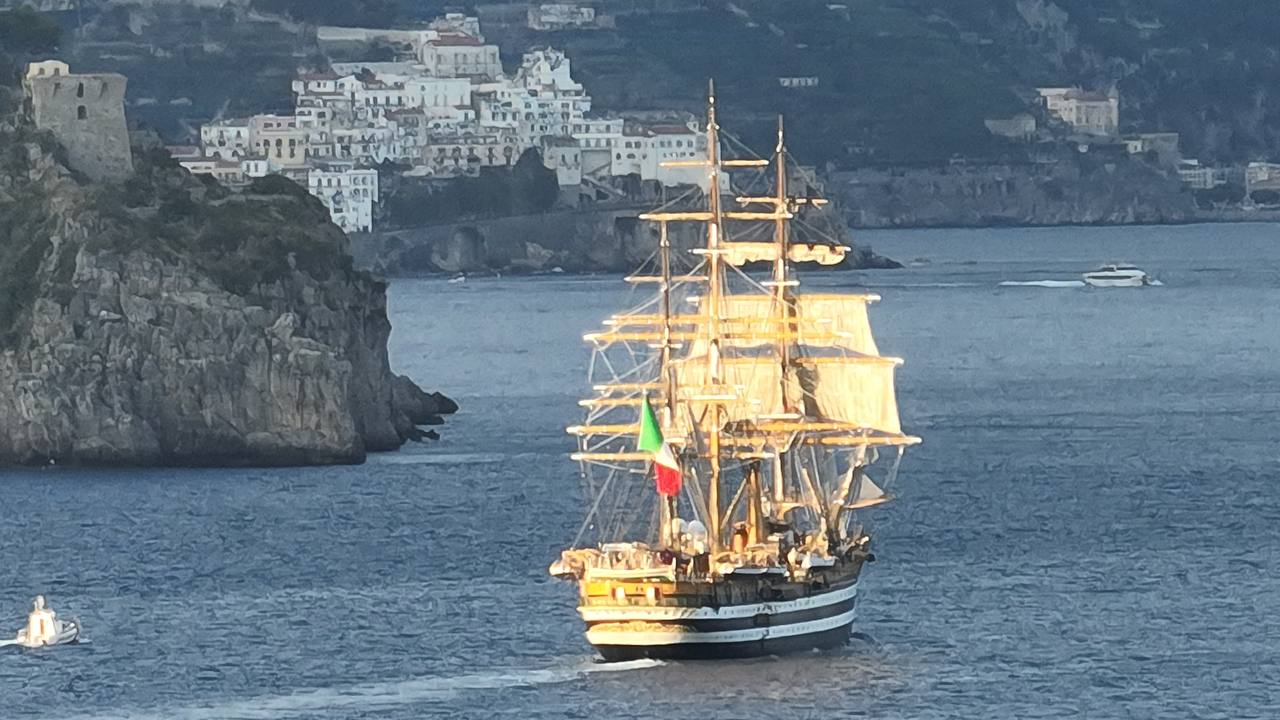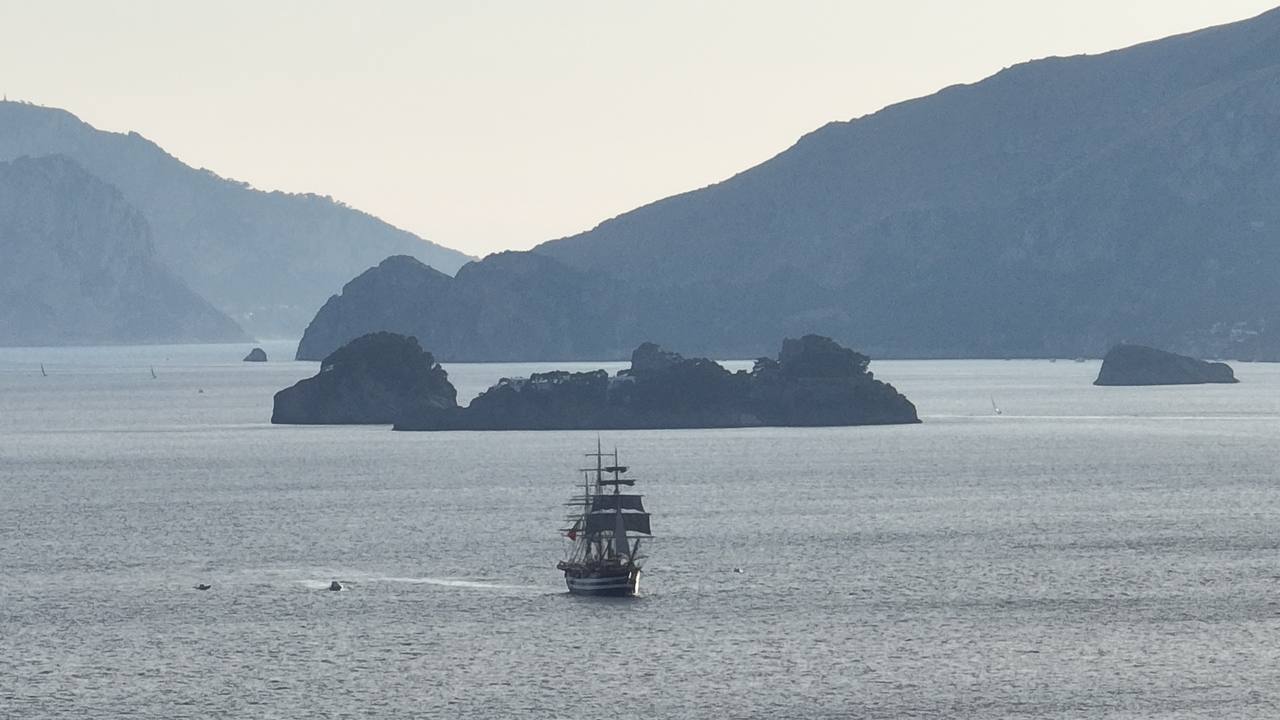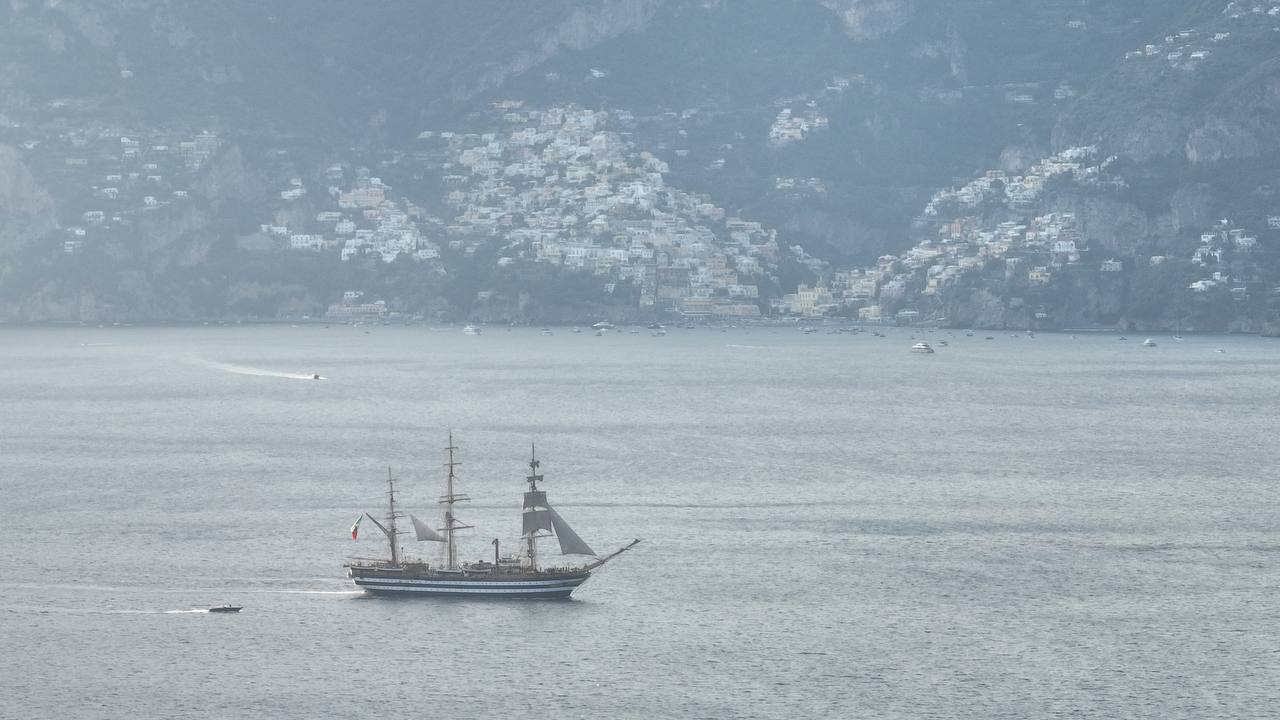
The world’s most beautiful ship sailed into the waters of the Sirens, adding timeless grace to a coastline already steeped in magic. The occasion was the weekend of the Regatta of the Ancient Maritime Republics in Amalfi, and the arrival of the Amerigo Vespucci transformed the bay into a stage of tradition, pride, and wonder.
It was a breathtaking sight: against the backdrop of Li Galli, Positano, Capo di Conca, Maiori, and Amalfi, the majestic vessel dropped anchor, where it would remain until race day.
Her appearance came in the stillness of Saturday evening, 17 May 2025, just before 7pm. Sailing from Naples, one of the stops on her 2023–2025 World Tour, the Vespucci emerged from behind the Li Galli islands with Capri silhouetted in the distance. She then traced her course along the coastline, gliding through the very waters where myth tells us Odysseus once had himself bound to his ship’s mast to resist the irresistible song of the Sirens.
From Positano to Maiori, the tall ship moved with solemn grace before turning toward Amalfi, where she cast anchor. Along the coastal road, on terraces and beaches, thousands of people gathered to watch, spellbound, as the legendary vessel came to rest before them.
A Salute to Amalfi’s Maritime Heritage
The presence of the Amerigo Vespucci was more than spectacle—it was a tribute to the long seafaring history of the Amalfi Coast, marking the 70th Regatta of the Ancient Maritime Republics. This historic rowing event commemorates the naval might of Amalfi, Pisa, Genoa, and Venice. Once rivals who dominated Mediterranean trade routes in the Middle Ages, today they renew their shared heritage in a spirited sporting contest on the water.
The Story of the Amerigo Vespucci
The Amerigo Vespucci is the oldest ship still in service with the Italian Navy, and she was built just across the bay at the Royal Shipyard of Castellammare di Stabia. Her keel was laid on 12 May 1930, and she was launched on 22 February 1931, with Mrs. Elena Cerio as the ship’s sponsor. Delivered to the Royal Navy that May, she entered service as a training vessel on 6 June, joining her slightly smaller sister ship, the Cristoforo Colombo. Together they formed the “Training Ship Division” under Admiral Cavagnari.
On 15 October 1931, after completing her first training voyage, the Vespucci was presented with her Battle Flag in Genoa. Since then, she has carried cadets across the world’s seas, instilling in them the discipline and traditions of seamanship.
Her motto is now legendary: “Not who begins but who perseveres.” It was adopted in 1978, replacing earlier mottos, first “For the Homeland and the King”, then, after World War II, “Steadfast in the fury of winds and events.”
Technically, the Vespucci is a sailing ship with auxiliary engines, rigged as a full-rigged ship. She carries three vertical masts, fore, main, and mizzen, each fitted with yards and square sails, plus a bowsprit that functions as a fourth mast. In addition to her square sails, she also carries staysails and a gaff-rigged spanker on the mizzen.
Her elegance lies in the details: the polished woods, the flawless lines, and the white sails that stretch proudly against the sky. She is at once a vessel of training, a floating work of art, and an ambassador of Italy’s maritime spirit.
Today, the Amerigo Vespucci is far more than a school for future naval officers. She is a symbol of identity and pride, carrying Italy’s colors across oceans as a messenger of culture, tradition, and excellence.
Perhaps this is why one question follows her wherever she sails: “Which is the most beautiful ship in the world?”
And the answer, unchanged for generations, is always the same: “The Amerigo Vespucci.”
